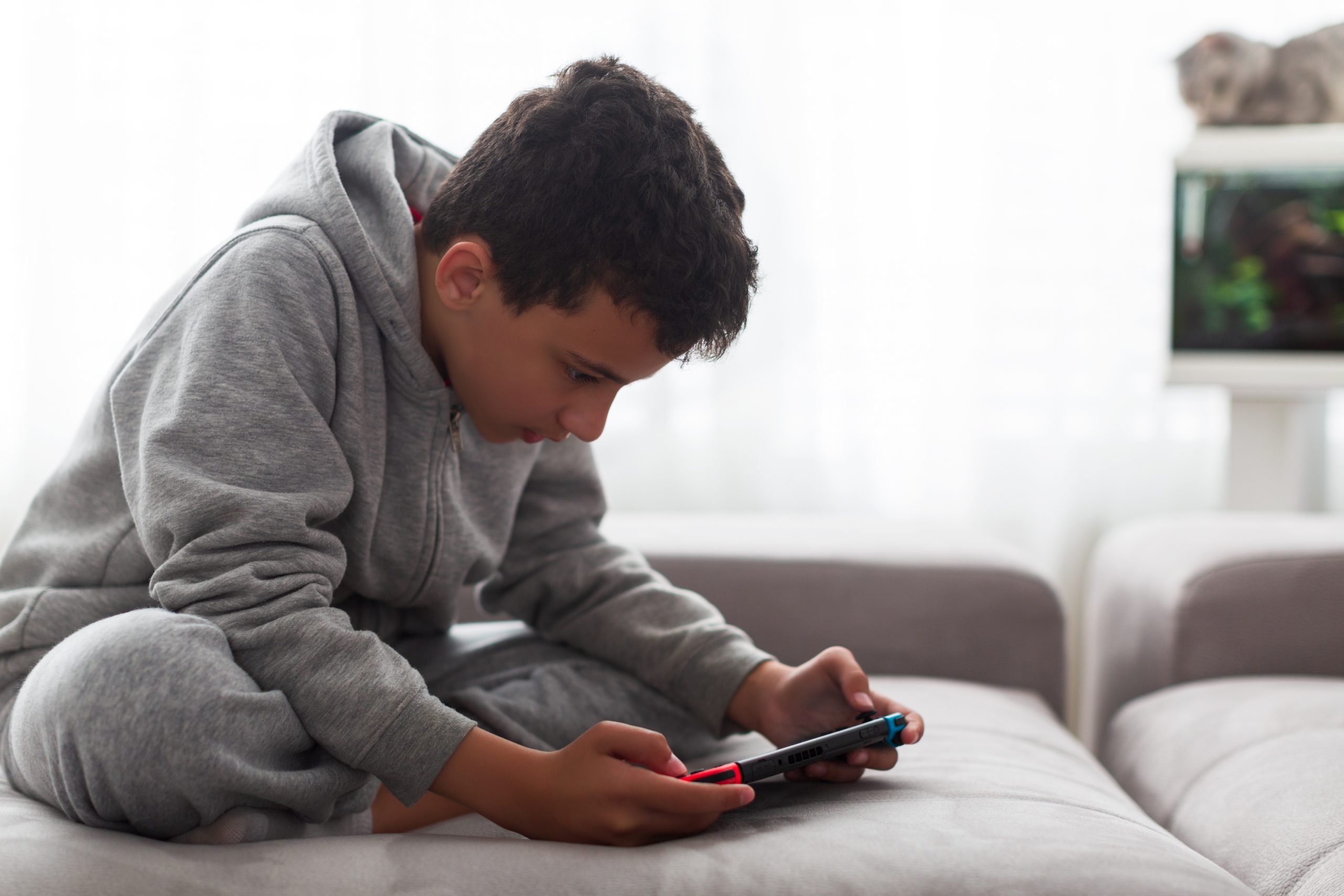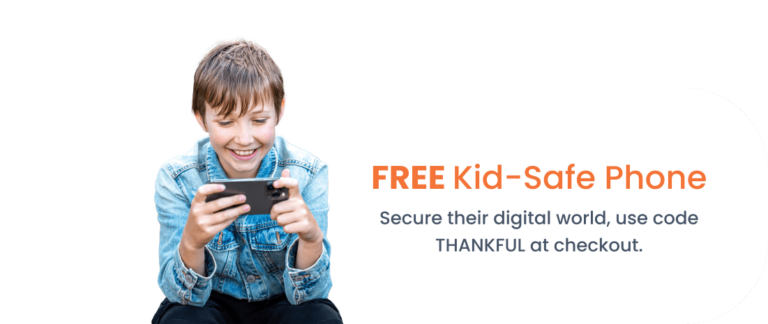From homes to school to parks, kids use their tech everywhere now. Unfortunately, that tech can also use our kids through things like tech addiction to unwanted Internet access. Let’s look at how we can set up boundaries for our kids and their tech use, as well as teach them how to keep their tech safe while on the go.
How to Limit Internet Access at Home
If your kids are using an iPad, and they aren’t old enough to be doing more than watching movies or playing games, they might still be accessing the Internet. Most apps and games require some form of Internet use to function. So you might want to know how to limit Internet access at home when it comes to these devices. If so, look at the device you are using and start there.
Parental Control Features Built into your Devices
iPads
Apple has a lot of options when it comes to parental control for Internet use. They even have a walkthrough on their site which will teach you how to set up parental control on all the devices in your household. You can set up passcodes, setting yourself as the parent account, in order to keep your kids from changing the settings behind your back or even by accident. What devices have parental controls? They have options for iPhones, iPad, and iPod touch. While most of their settings are for privacy or restricting access to certain features (especially explicit content available online), they also have the ability for you to set time limits or prevent volume changing.
Tablets (Samsung)
Samsung tablets also come with a child safety feature (depending on the version) called Samsung Kids. You can access it from the settings. In order to set up parental controls, you’ll need to set up a PIN. After that, you can view activity on your child’s profile and see what content is allowed under Samsung Kids. Similar to Apple, you can set usage limits and check how much time they spent on which apps. What devices have parental controls? Only Samsung devices running Pie OS (Android version 9.0 and higher). It’s also dependent on your carrier—check your account for availability.
Amazon Fire (Kindle)
If you have an Amazon Fire tablet, there are some parental controls available to you to help keep your kids safe, but they are more limited. You can restrict web browsing, accessing the Amazon store or shop, turn off cameras and location services, and add time restrictions. They don’t remove mature or adult rated content from the device, but you can block categories, such as books or music.
Nintendo, PS Vita, and Other Handheld Devices
If your household has a Switch, DS, or Wii-U, you should be aware of the parental controls Nintendo has made available to you. You can set restrictions on what games they play, when they play, and how long. In order to set those parental controls you’ll need to set up a Nintendo Account.
If you have a device like a PS Vita, it comes with a small selection of parental controls, using a rating system to restrict access to different kinds of content. While there aren’t currently any time limits or restrictions of use, you can restrict access through a password as well as control whether or not a browser can be opened and location data can be used.
There are more handheld gaming systems out there, some with no parental controls available at all. That’s where you have to put in a few more boundaries and rules. The great feature of being able to go anywhere when you play comes with the downside of devices hidden under pillows or stashed outside of your sight. Set up rules about when, where, and for how long they can be used. If your kids start to show signs of a tech addiction, it might be time to set up stricter limits.
Inside Your Home
Your toddler is playing on their tablet and almost squishing the device into their face. That’s not great, but it’s okay—your toddler and tech are safe. But then they stand up, wander into the bathroom, and throw the tablet into the toilet. Uh oh—the tablet (or iPad) is ruined. That’s where rules come in. Now that you know about some of the safety features for kids built into the devices themselves, let’s look at some of the rules, boundaries, and safety plans you should make if you have portable tech inside your household.
Portable tech needs rules and a sturdy case. Check out what Troomi has to say about keeping tech devices clean. While part of keeping our devices safe from our kids might include getting a case for our tablet or limiting where it can be used, what will keep our kids safe from our devices, especially if they do take those devices out of our eyesight?
Limit Access with a Password
Set a password on your tablet device (if the device allows it) to create a barrier of access between the device and your child. If they want to use it, they need to come to you first.
Set Limits
Portable tech is very convenient. I know I’ve enjoyed going to a different room for a few minutes of alone time to unwind, but that ability to be alone with tech can be hazardous to our kids. Make sure to set up places and times they can use their devices. For example, kids shouldn’t use their iPad in their room at night when they should be going to bed.
Pick Good Apps
If you’ve set it up right, you can have all the control with your children’s device, so make sure the apps and features your children use are safe and educational.
Control Internet Access
When I think of how to limit Internet access at home, I usually think of three options.
1. Disconnect the phone. If you don’t connect the device to the Wifi or a data plan at all, your child can’t access the Internet. This comes with a big downside of never being able to download new apps or update existing apps.
2. Airplane mode. The trade off is that as easy as it is for parents to turn it on, it’s just as easy for kids to turn it off.
3. Parental controls. See above for how to set up parental controls on all the devices.
Disable Notifications
The Internet is trying to reach our kids in sneaky ways. Apps of all kinds have built in notifications that alert the user to new products and updates or just remind them to use the app. Our kids, especially those who can’t read, click on anything on the screen. Limit what they can see, and thus interact with, by disabling notifications.
Protective Case
All the toys our kids play with wear down quickly. Kids, just in the joyful vigor of being kids, break things quickly. An unfortunate reality of them using devices is that those are then the toys in their hands. Help those devices last longer with a protective case.
Children’s Headphones
While it’s important to know what your children are watching, and listening can be a great tool for finding out what they are viewing without looking, “Baby Shark” for the ten thousandth time can break even the most resilient parent. The New York Times (Wirecutter) created a list of child-safe headphones with a breakdown of how they decided which were safest and why. If you’re curious about why child-safe headphones are so important, check out this article for more information.
Outside Your Home
The advantage of portable devices is that you can take them on the go, car trips, parks, friends houses, and more. Keeping them safe, and your kids responsible, is still important however. Being device free out of the house, especially while playing, is the ideal. If you still need some tips, let’s look at how to keep these devices safe on the go.
Protect the Device
Devices are fragile, so fragile in fact that keeping a device in the sun can have long lasting damage to the device’s battery. Teach your kids to keep their devices safe. Don’t let them leave them in the sun, forget them at the park, or drop them in water. Teach them not to throw their device, even when it makes them mad.
Sturdy Case
Part of protecting a device is its case. If you have already gotten a case for at-home use, it will likely work on-the-go as well. If not, consider what kind of case it might need to be protected.
Don’t Wander-Watch
It’s one thing for kids to walk and watch their tablet devices at home, but outside it’s a no-go. Roads, strangers, obstacles, and more can all put your kids at risk when they aren’t paying attention. If they are using devices outside, they should be sitting. Or better yet, leave their device at home.
Car Mount
If you’ve decided to have your kids watch shows in the car (here are some alternatives), a car mount for your portable device can allow more than one kid to use the device to watch videos at a time.
Troomi wants to help keep kids safe while using tech by teaching them responsible habits. These phones have kidsafe/educational apps, time limits, and military-grade security, keeping kids safe, even on the go. Check out Troomi for a phone that’s right for your family.


